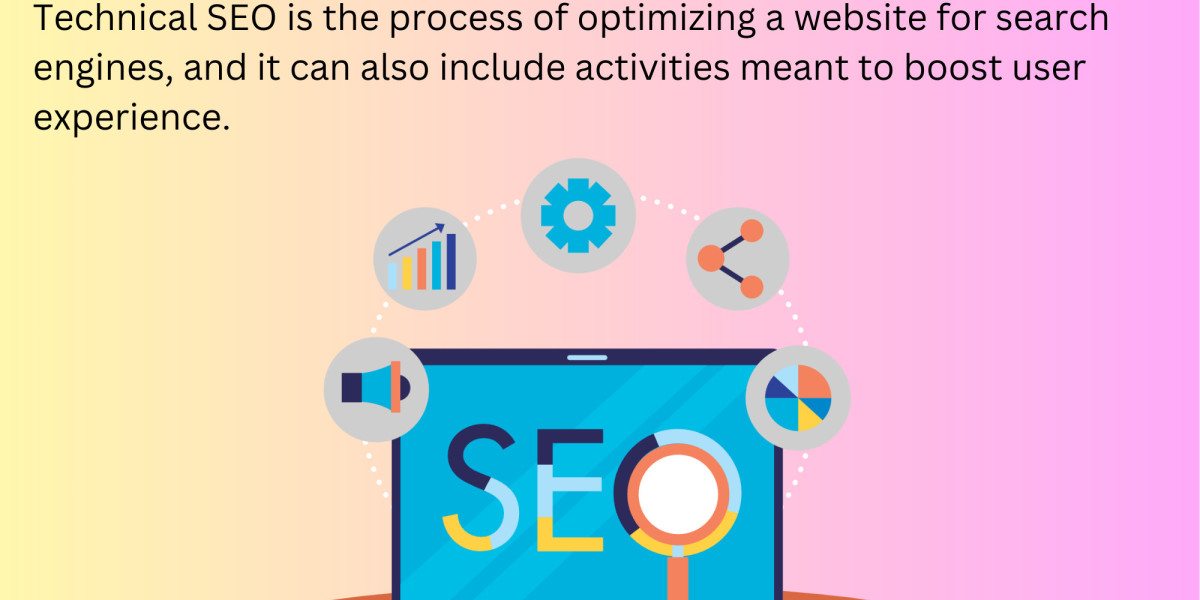Introduction:
In the vast landscape of Search Engine Optimization (SEO), technical SEO stands as the backbone that supports a website’s visibility on search engine result pages (SERPs). While content and backlinks play crucial roles in SEO, neglecting technical aspects can hinder a website’s performance. In this blog post, we will delve into the intricacies of technical SEO factors and explore how they contribute to a website’s success in the digital realm.
- Website Speed and Performance:
One of the primary technical SEO factors is the speed and performance of a website. Search engines prioritize delivering the best user experience, and a slow website can lead to higher bounce rates. Factors affecting speed include server response time, image optimization, and browser caching. Implementing techniques such as compression and minimizing HTTP requests can significantly improve a site’s loading time.
- Mobile Friendliness:
With the increasing use of mobile devices, search engines prioritize mobile-friendly websites. Google, for instance, uses mobile-first indexing, meaning it primarily uses the mobile version of a site for indexing and ranking. Responsive web design and ensuring that content is accessible and readable on various devices are essential for technical SEO.
- Crawlability and Indexability:
Search engines use crawlers to navigate and index web pages. Ensuring that search engine bots can easily crawl and index your site is crucial for SEO success. Factors such as the robots.txt file, XML sitemaps, and a clean URL structure contribute to a website’s crawlability and indexability.
- Site Architecture and URL Structure:
A well-organized site structure not only enhances user experience but also aids search engines in understanding the hierarchy of your content. Implementing a clear URL structure, logical navigation, and a proper internal linking strategy contribute to improved SEO. A siloed structure, where related content is grouped together, can enhance the relevance of your pages.
- Schema Markup:
Schema markup is a powerful tool that provides additional context to search engines about the content on your pages. It helps search engines understand the meaning behind the content, leading to better search results. Implementing schema markup for products, reviews, events, and other entities can enhance the visibility of your content in rich snippets.
- Website Security (HTTPS):
Security is a top priority for both users and search engines. Google, in particular, considers HTTPS as a ranking factor. Implementing SSL/TLS certificates not only secures data transmission but also positively impacts your website’s SEO. Visitors are more likely to trust a secure site, leading to increased engagement.
- Canonicalization:
Duplicate content can harm a website’s SEO. Canonical tags help address this issue by specifying the preferred version of a page. This ensures that search engines understand which version of a page to index and display in search results, avoiding confusion and potential penalties.
Age and Content Rendering:
JavaScript SEO: Ensure that search engines can crawl and understand JavaScript-rendered content. Googlebot can now index content generated by JavaScript, but it’s crucial to test and optimize.
Server and Hosting Considerations:
Server Uptime: A reliable hosting service and server uptime are critical for search engine rankings.
CDN (Content Delivery Network): Implementing a CDN can improve page load times and provide a better user experience.
Mobile-First Approach:
Mobile Optimization: Optimize for mobile users, as search engines prioritize mobile-friendly content. Test your site using Google’s Mobile-Friendly Test tool.
Monitoring and Analytics:
Search Console: Regularly check Google Search Console for crawl errors, indexing issues, and other notifications.
Analytics Tools: Use analytics tools to monitor user behavior, track key performance indicators (KPIs), and make data-driven decisions.
Technical SEO is a dynamic field, and staying informed about algorithm updates and emerging trends is crucial. By addressing these technical elements, website owners and SEO professionals can lay a solid foundation for improved search engine visibility and user experience.
Conclusion:
In the dynamic landscape of SEO, technical factors play a pivotal role in determining a website’s success. From optimizing website speed to ensuring mobile friendliness, implementing schema markup, and maintaining a secure environment, every technical SEO aspect contributes to a website’s visibility on search engines. By understanding and prioritizing these factors, website owners and SEO professionals can build a solid foundation for sustainable online success.















